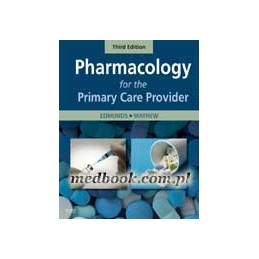Description
Written by and for nurse practitioners, this practical textbook focuses on what primary care providers need to learn and practice drug therapy. With an overall emphasis on patient teaching and health promotion, you will learn how to provide effective patient teaching about medications and how to gain patient compliance. Drug coverage focuses on key drugs” rather than prototype drugs,” so you can find important information about the most commonly used drugs rather than the first drug in each class. You will also find discussions on the legal and professional issues unique to nurse practitioners and other primary care providers. The 3rd edition also features an expanded emphasis on established clinical practice guidelines and evidence-based practice, plus two new chapters that cover drugs for ADHD and drugs for dementia.
Product Details
Reference
35281
EAN13
9780323051316
ISBN
9780323051316
Data sheet
Publication date
2008
Issue number
3
Cover
paperback
Pages count
864
Dimensions (mm)
216 x 276
Weight (g)
1810
PART ONE - ESSENTIAL CONCEPTS FOR THE PRESCRIPTION OF MEDICATIONS Unit 1: Foundations of Prescriptive Practice Unit 2: Pharmacokinetics and Pharmacodynamics Unit 3: The Art and Science of Pharmacotherapeutics PART TWO - DRUG MONOGRAPHS Unit 4: Topical Agents Unit 5: Respiratory Agents Unit 6: Cardiovascular Agents Unit 7: Gastrointestinal Agents Unit 8: Renal/Genitourinary Agents Unit 9: Musculoskeletal Agents Unit 10: Central Nervous System Agents Unit 11: Psychotropic Agents Unit 12: Endocrine Agents Unit 13: Female Reproductive System Medications Unit 14: Antiinfectives Unit 15: Health Promotion Appendix




 Delivery policy
Delivery policy
 Security policy
Security policy
 Return policy
Return policy
